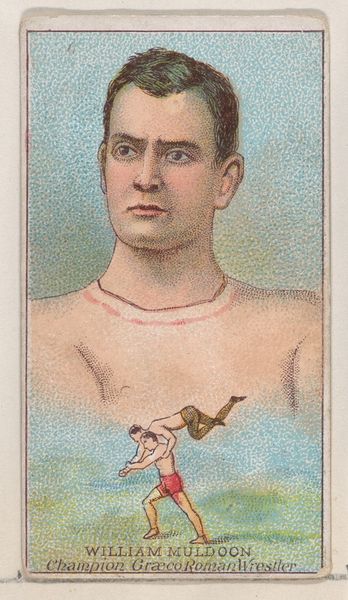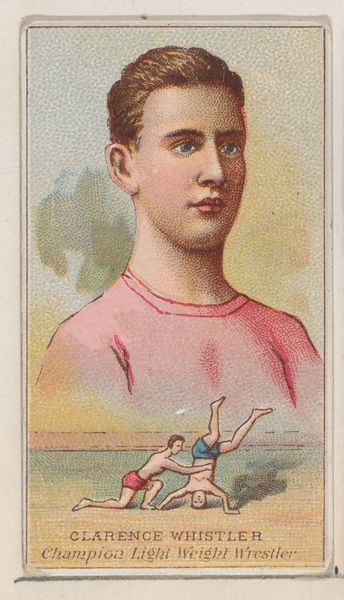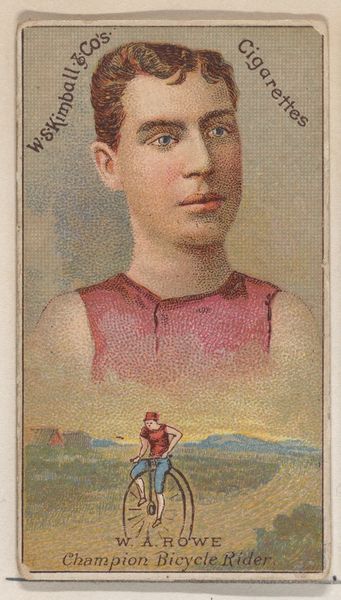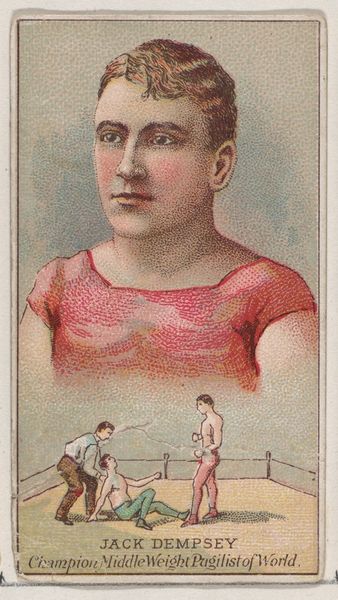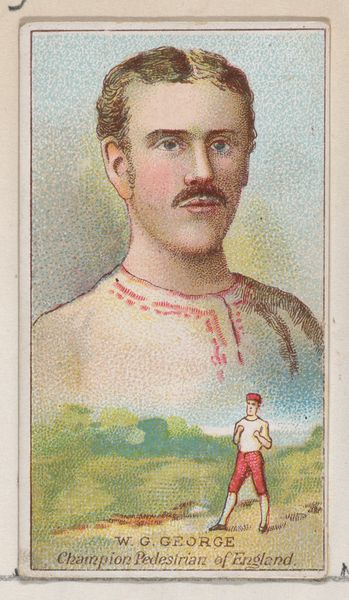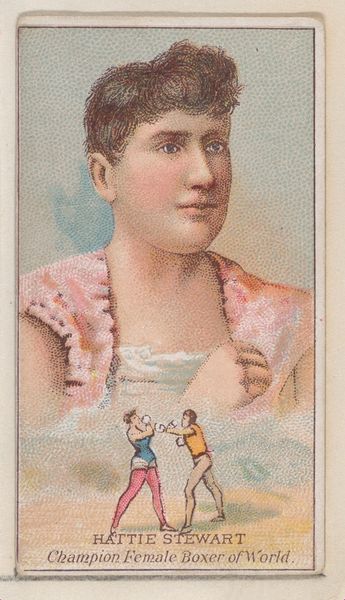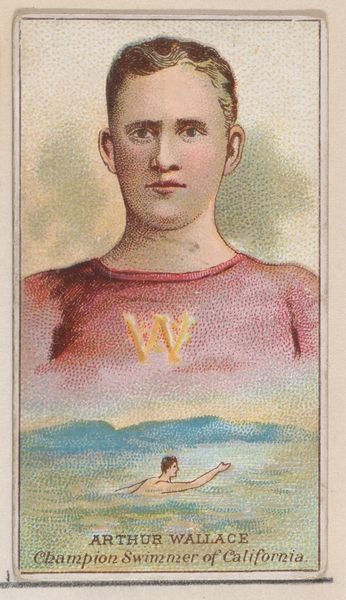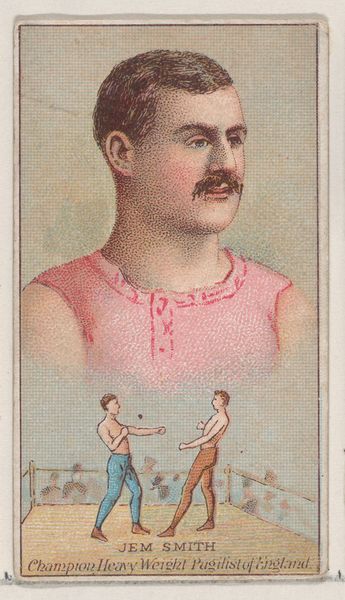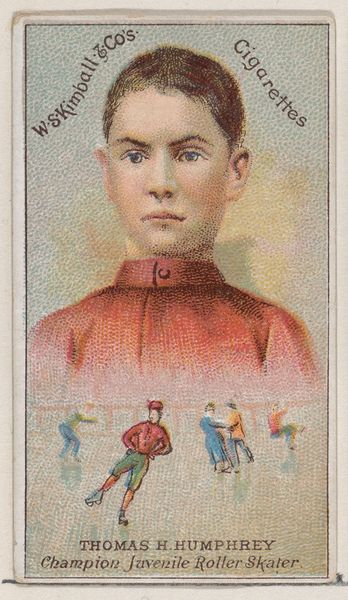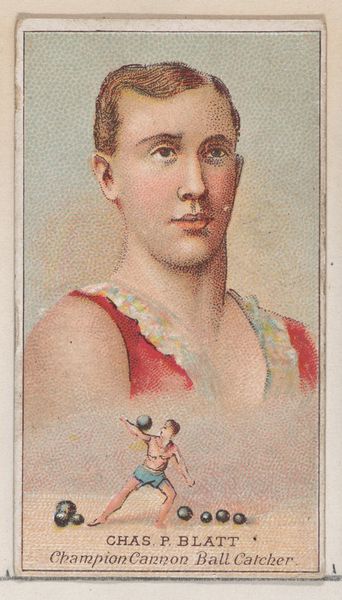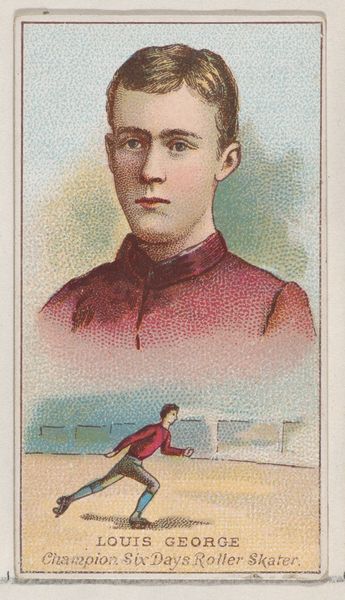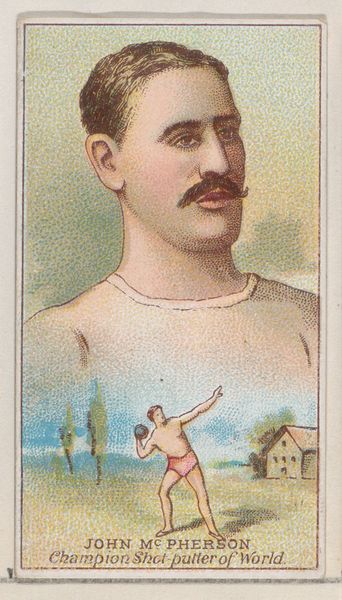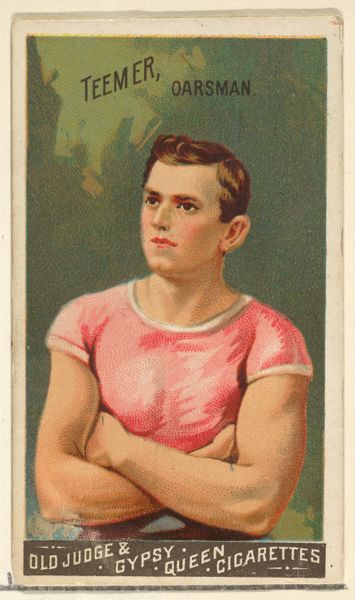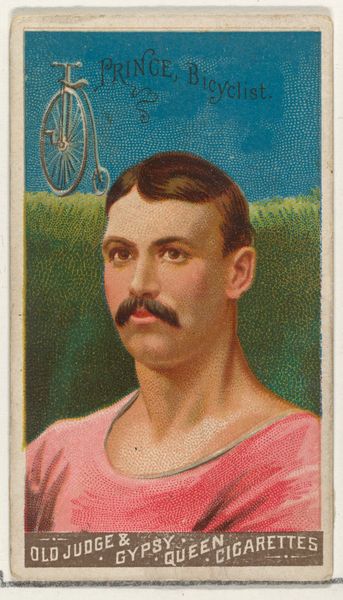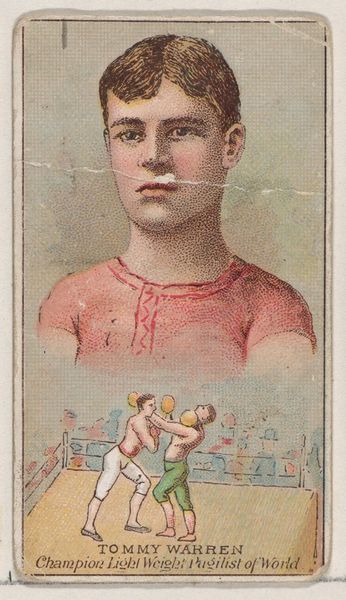
L.E. Myers, Champon Runner of the World, from the Champions of Games and Sports series (N184, Type 1) issued by W.S. Kimball & Co. 1887
0:00
0:00
drawing, coloured-pencil, print
#
portrait
#
drawing
#
coloured-pencil
# print
#
impressionism
#
coloured pencil
#
men
#
genre-painting
#
academic-art
#
modernism
Dimensions: Sheet: 2 11/16 × 1 1/2 in. (6.8 × 3.8 cm)
Copyright: Public Domain
Curator: Here we have a peculiar little portrait titled "L.E. Myers, Champion Runner of the World" from the Champions of Games and Sports series. It was printed by W.S. Kimball & Co. around 1887, made with coloured pencils and other printmaking methods. Editor: It’s giving me a slightly unsettling, doll-like vibe. The intense gaze, that almost too-perfect skin tone, and that…pink! It's all so precisely rendered, like a porcelain figurine. I'm strangely drawn in. Curator: Indeed, the pink is quite striking! What strikes me is that this card, given that it was a cigarette card insert, elevates this sportsman to the status of an icon. The way he is depicted— almost floating over the runners below—positions him within the visual language reserved for saints and heroes. Editor: A cigarette card saint, that’s delightfully absurd! So, you're saying this isn't just a portrait, but a carefully constructed symbol? It feels almost sacrilegious, blending the everyday with something elevated. Does the diamond on his cap mean anything? Curator: Precisely! While mass-produced, it utilizes potent visual symbolism. The diamond is about purity and invincibility. The soft pastel colours and the gentle dotting create a slightly hazy, idealized effect. By the late 19th century, sports were increasingly a source of national pride, and this card participates in that trend by portraying him as superhuman, a ‘Champion of the World.’ Editor: Hazy like a dream, or maybe the smoke from those cigarettes, haha. There's definitely a disconnect between the subject and the setting though. He's in this mundane sporting scene, yet framed as something otherworldly, a symbol rather than just a runner. Does it highlight the shift towards commercializing heros? Curator: Absolutely, it captures that very tension! Sport was gaining in popularity, becoming a mass spectator event, and these cards became miniature billboards in a way. That blend of commerce and the heroic ideal is key. Editor: Well, it’s certainly left a lasting impression. I came in expecting something straightforward, but I'm leaving with questions about sport, idolatry, and capitalism. Curator: I concur. These fleeting glimpses into the past often reveal complex cultural values embedded within simple, everyday objects.
Comments
No comments
Be the first to comment and join the conversation on the ultimate creative platform.
